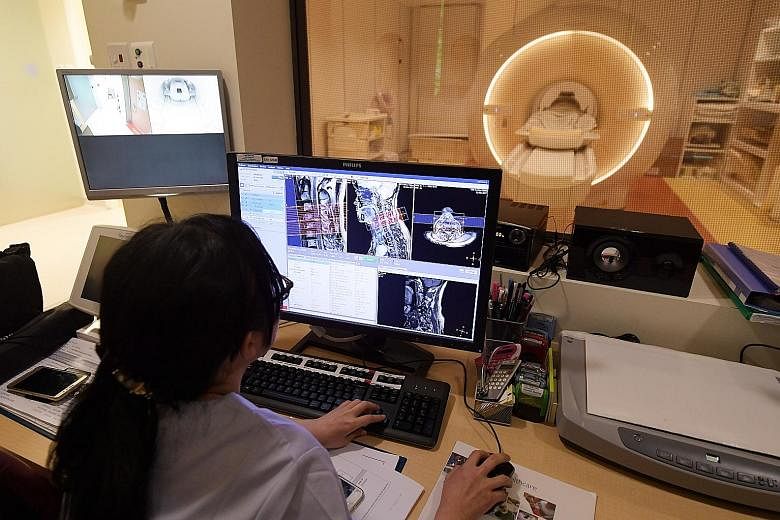Q Do MRI scans cause any harm?
A Magnetic resonance imaging, or MRI, is considered one of the safest technologies for looking deep inside the body, because it does not carry the radiation risk of X-rays or PET (positron emission tomography) scans.
"Overall, MRI is a very safe test," said Dr Max Wintermark, chief of neuroradiology at Stanford University.
Most concerns about MRIs involve people with metal, such as shrapnel, embedded in their bodies, or someone with an implanted medical device, like a cochlear implant or an older pacemaker. The imaging system's strong magnetic field can slightly shift or heat up embedded metal and disrupt the activities of medical devices. It can also draw metal objects into the magnetic field, and there are occasional accidents when standard safety procedures are not followed and MRI magnets have sucked in hospital beds, screwdrivers, oxygen tanks and other metallic objects.
"That's why we take extreme precautions to know if a patient has a device, so we can take appropriate measures to make it safe for them, too," Dr Wintermark said. In some cases, people with implants or embedded metal cannot safely get an MRI and must use a different scanning technology instead.
Some street clothes such as socks and underwear contain metal in unexpected places, which is why patients are usually asked to change into hospital gowns before an MRI, said Dr David Hintenlang, a medical physicist in the radiology department of Ohio State University Wexner Medical Centre.
About 60 to 70 per cent of MRI scans are used to look at the brain and spinal cord, Dr Wintermark said, and another 20 to 25 per cent to examine joints. Ultrasound is generally the first choice for abdominal scans, he said, because it costs less than an MRI.
The experience of getting an MRI has improved significantly, Dr Wintermark said. The devices used at many medical centres are now wider and shallower - no longer claustrophobia-inducing tunnels - and the loud banging noises have been dampened. "It doesn't feel as oppressive as it used to," he said.
MRI technology continues to improve, providing clearer images of soft tissue, Dr Hintenlang said. The technology is now commonly used during surgery and to direct radiation therapy, too.
"I think it'll be around for a long time," he said.
NYTIMES

